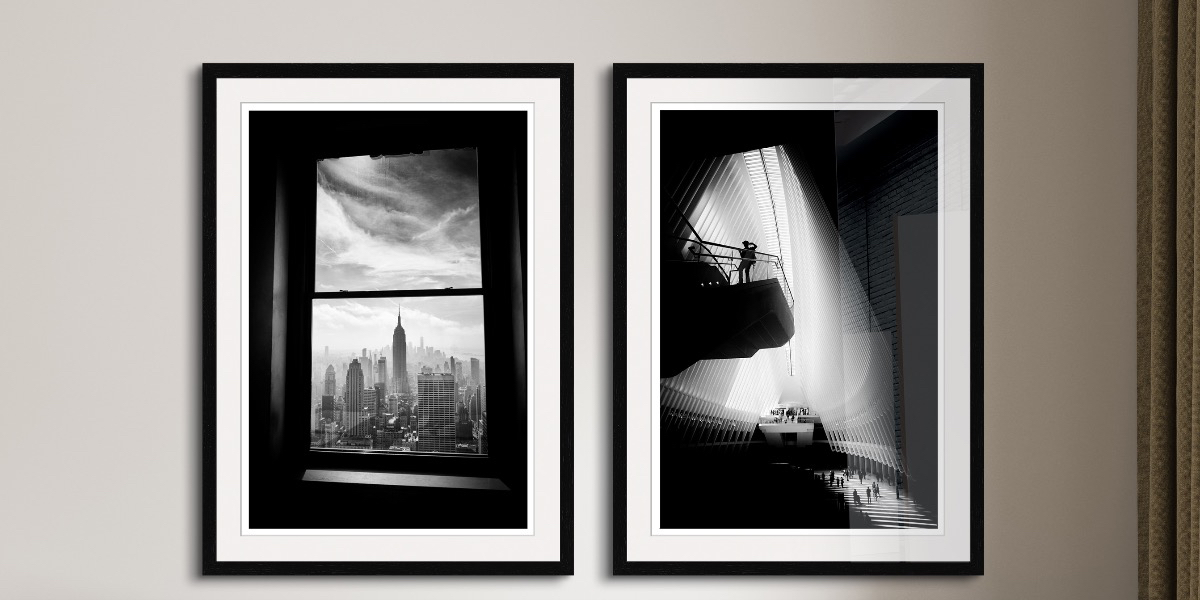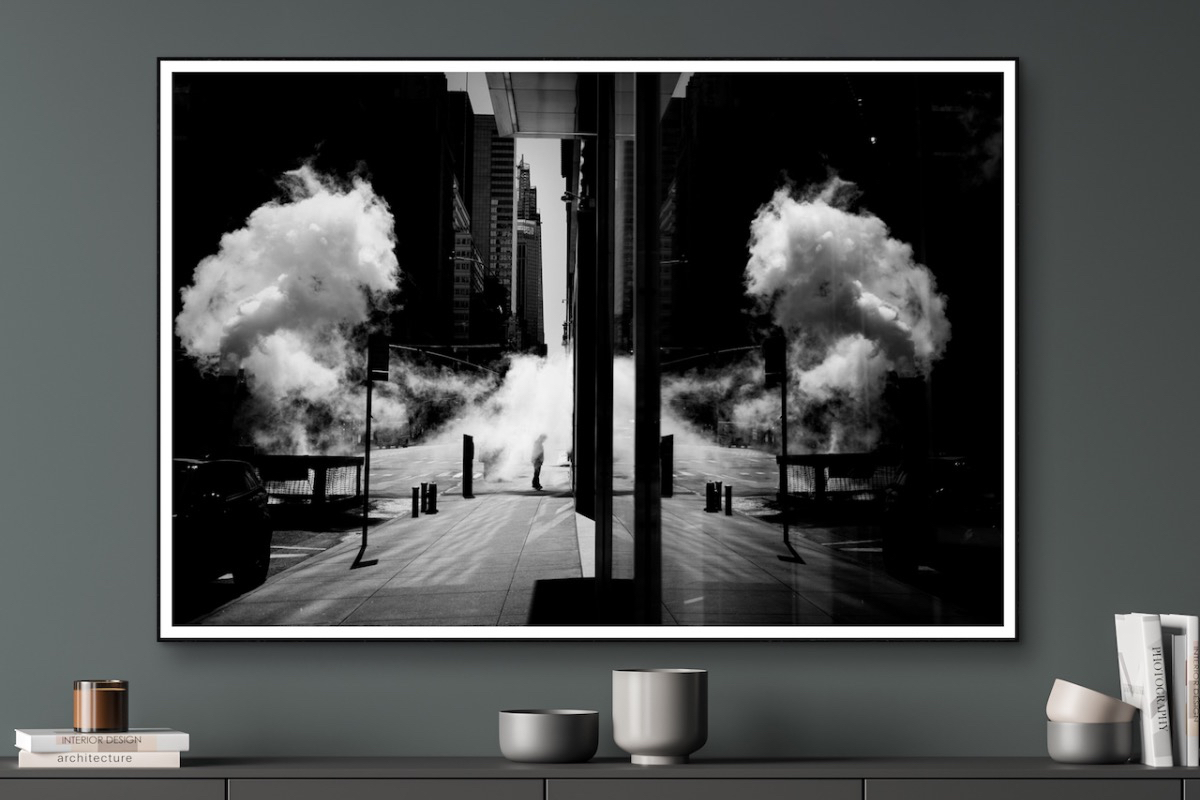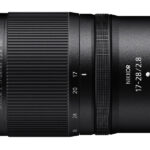
Live life in shades of grey
Posted on Sep 29, 2022
Follow WhiteWall’s expert advice and achieve a timeless look with your best pictures, by going black & white
Advertisement feature
French inventor Joseph Nicéphore Nièpce was the first person to create a lightfast photographic image, a feat he achieved in 1826 with a ‘camera obscura’ and light-sensitive asphalt.
His picture in black & white gradients is considered the world’s first photograph. In the decades that followed, black & white photography remained the only way to capture images of subjects. Applied colour photography didn’t come into use until the thirties.
Black & white photography featuring the right images and subjects can become multi-layered works of art. Whether you show them off behind crystal-clear acrylic glass, put them onto aluminium dibond or print your large-format photography onto premium Ilford baryta paper – with its fine grey gradients, precise details and impressive contrast sharpness – you’re sure to find the best products for gallery-quality black & white conversions at WhiteWall.
WhiteWall expert and product management team lead Jan-Ole Schmidt answers our questions, giving recommendations on black & white pictures for the home – and tips on some creative ways to present your own.
Photography News: Which subjects are particularly suited to classic black & white photography, and which subjects have a more modern feel?
Jan-Ole Schmidt: Anything can work in black & white, but the absence of colour might not always be the best approach. For example, in nature photography, with animals, landscapes or natural phenomena, the lack of colour contrast would make it difficult to correctly reproduce subjects such as rainbows or rose gardens. Images without colours cause the viewer’s attention to be directed towards the shapes and brightness contrast, resulting in calmer or more expressive photos.
Portraits and street are both classic approaches. Architectural photography lends a more modern feel, especially when it features contemporary buildings. Of course, in the end, there are no rules. Black & white can be exploited to exciting effect in all disciplines, especially artistic photography. One good little trick is to use black & white in low light when shooting at high ISO, so that any colour noise has the visual effect of nice film grain, which adds mood to pictures. Actually, shooting at high ISO can also be very effective when used deliberately, like in street photography or at concerts.
PN: What’s the best order to do it in? Is it preferable to shoot in the camera’s black & white mode and then edit, or shoot the subject in colour and select black & white in photo editing – or when having it printed by WhiteWall?
Jan-Ole: The advantage of black & white mode is that you can assess the effect of the image right away. If you save JPEG and Raw files to your camera at the same time, the JPEG will be in black & white, but the Raw file will be in colour for converting later. The Raw format is a recommended mode; a picture can then be converted to black & white during processing and uploaded to WhiteWall that way. This ensures the photographer has complete control over the result.
PN: Sunrise and sunset are classic times for colour photography – is it possible to get good black & white shots, too? Do you have some tips on contrast and lines?
Jan-Ole: If soft, warm colours aren’t important to the shot, black & white pictures can work at these times, too. Diffuse, restrained light and soft shadows have an important part to play. Times of day and harder shadows might even be better, because they result in more intense contrasts and shapes. But, of course, it depends on the effect you are going for. It’s ultimately the photographer’s decision – there are no fixed rules.

PN: What advantages do baryta prints have, and what results can be achieved?
Jan-Ole: A WhiteWall print on Ilford baryta paper is closer than any other medium to the classic look developed in the 19th century, and thus the origin of photography. This unique look and texture is an experience in itself. You don’t need to be an expert to see and feel the difference compared to conventional photo papers. Baryta’s classic structure and silky sheen stand out. It’s strong, and feels completely different from standard paper with polyethylene backing. Reproduction is warm in comparison, and the contrast range very high. Depth of blacks is particularly impressive. WhiteWall baryta prints show black & white photography at its best.
PN: Are baryta prints particularly special at WhiteWall?
Jan-Ole: Photo prints on baryta paper are indeed one of WhiteWall’s top specialities. It is a paper for enthusiasts who appreciate that added extra, demonstrating the true enthusiasm for photography we share with our customers. Baryta prints are not mass-produced. With them, we aim to simply promote the special photographer’s touch for the connoisseurs out there.
PN: Are window mounting and framing necessary for black & white photography?
Jan-Ole: They certainly make sense, because if the prints aren’t for a portfolio folder, they should be displayed in a frame. Using a window mount and framing emphasises the image, drawing attention to it and turning it into a real work of art.
There are lots of options to choose from. Stay monochrome, for example, with a classic off-white cut mount and a black frame – or add visual highlights, with a real wooden veneer frame made of oak or walnut.
For more information, visit Whitewall’s website.
Appears in Issue 101 of Photography News. Read the full publication here.
Don’t forget to sign up to receive our newsletter below, and get notified about the new issue, exclusive offers and competitions.
Have you heard The Photography News Podcast? Tune in for news, techniques, advice and much more! Click here to listen for free.




